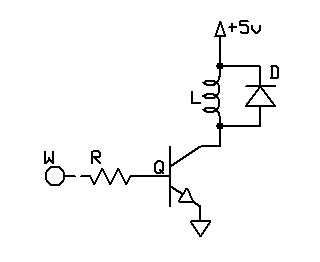Hello all,
I have a quick question about relay wiring.
If i want to activate the relay with at the same time turning on the LED, I need to simultaneously ground the negative side of the relay coil as well as ground the LED (Being fed by a 1K resistor from a 12 Volt supply).
I know there are other ways to wire relays, but I'm interested in this way for the moment.
My question is: is it OK to tie the negative terminal of the relay to the cathode of the LED (again, with the LED connected through a 1K resistor to 12V) at a SPDT switch. The other contact on the switch is ground. Then to turn on the Relay, toggle the switch so that the the LED and negative coil both contact ground.
Any problems here?
Thank you.
I have a quick question about relay wiring.
If i want to activate the relay with at the same time turning on the LED, I need to simultaneously ground the negative side of the relay coil as well as ground the LED (Being fed by a 1K resistor from a 12 Volt supply).
I know there are other ways to wire relays, but I'm interested in this way for the moment.
My question is: is it OK to tie the negative terminal of the relay to the cathode of the LED (again, with the LED connected through a 1K resistor to 12V) at a SPDT switch. The other contact on the switch is ground. Then to turn on the Relay, toggle the switch so that the the LED and negative coil both contact ground.
Any problems here?
Thank you.

Comment